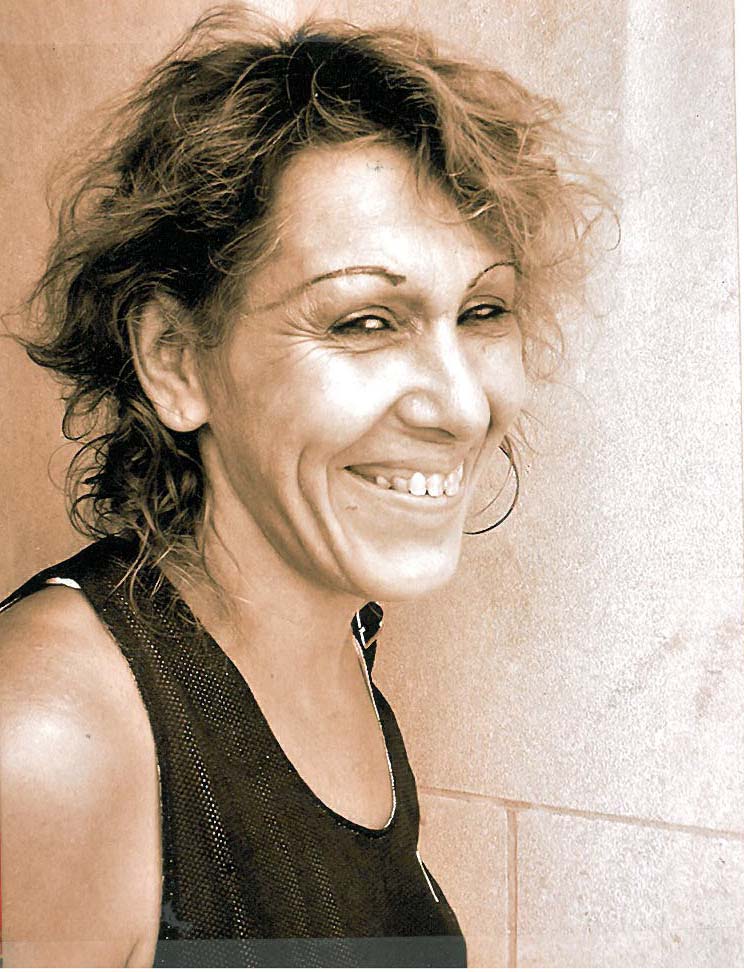Cathy the Vendor Helped by Grapevine
 Not Cathy because she wants to remain anonymous. Photo by Karen St. John Vincentby Tim Schwab
Not Cathy because she wants to remain anonymous. Photo by Karen St. John Vincentby Tim Schwab
Cathy Brown meets me in the Grapevine office. She’s dressed well in business casual with bright tawny hair and sufficient makeup, all of which give her a professional demeanor. Later I find out that her entire outfit is from the thrift store.
Before the questions had started, Cathy had already begun telling her life story. She was chatting with another Grapevine vendor about their experiences living on the street, and the circumstances which pushed each of them to homelessness at an early age.
As I talk with Cathy I’m impressed with her openness, and with her self-honesty. She speaks candidly about the mistakes she’s made in life—leaving her parents’ home at too early of an age and getting involved in difficult romantic relationships.
But Cathy draws on her experiences on the streets to make suggestions about solving the problem of homelessness. Cathy believes that certain social experiences as a youth have contributed to her becoming homelessness. For this reason, she emphasizes preventative measures, such as counseling for junior high and high school students, teaching them the reality of living on the streets, and the reality of trying to make it on your own. "Kids given community service to do shouldn’t be picking up trash on the side of the road. They should be learning about homelessness and AIDS," Cathy said.
Growing up in a small town outside of Seattle, Cathy first became homeless after she left home at 18 and lost the job she had. Unaccustomed to the bright lights of Seattle, Cathy made mistakes living on the streets. She’s experienced the benefits of communal living in the Seattle homeless camps in the 1980’s, but also has dealt with the seedier, more harrowing living situations that homelessness can force on you. She talks about the difficulties of being a woman on the street: "It’s harder for a woman. A woman has more needs…It’s not like being a man. He can lay his head down anywhere. A woman’s got to be more careful."
Cathy’s been in and out of homeless shelters and camps throughout her adult life. Just three years ago she was staying in a shelter in Columbus. The last five months, however, Cathy has found some respite from life on the streets. She’s found an apartment in Cleveland and a steady, supplemental income to her disability check by selling the Grapevine.
Cathy tells me she takes her job selling the Grapevine seriously. Four times a week she sells the paper, always attired in her blue-jeans and her Grapevine t-shirt. "It’s like a uniform for me, it’s what I always work in."
Judging the homeless as being lazy or inferior is a frequent, fallacious perception among non-homelesss people, according to Cathy, and she hopes the Grapevine will help change the public’s beliefs on this matter.
Cathy warns people who have never been homeless to try to understand the complexity of homelessness. "Don’t judge people out there on the streets. You don’t know why they’re homeless. It could be your brother, mother, sister, or aunt."
Cathy enumerates the reasons why people are on the streets. Problems with drugs, alcohol, mental illness are very common causes that she’s seen. She herself has battled with alcohol problems and with depression. Another contributing factor to homelessness is budgeting an income. According to Cathy, "Everybody’s trying to keep up with the Jones’, and the Jones’ are in debt."
Although no longer homeless, Cathy keeps in the touch with the homeless through her work with the Grapevine and her friends at the West Side Catholic Center. When asked about the resources available to the homeless here in Cleveland, she speaks highly of the Cleveland Street Card, a card available to homeless people and published by the Northeast Ohio Coalition for the Homeless, which lists free health and social services for the lowest income members of Cleveland.
There are drawbacks in accessing the resources, however, because the locations of clinics and shelters are so spread out. "If you don’t have money for rent or food, how are you going to afford $1.25 for the bus every time you need to go somewhere?"
Cathy would like to see a single resource center for homeless people, which would provide all services and a shelter in the same building. Another of her recommendations is to have a separate shelter for the working homeless. Many shelters enforce early evening curfews, which prevent many homeless people from employment that requires working nights.
Today, Cathy rents out an apartment, which she shares with her cats. The Public Housing Authority previously turned down Cathy because of her pets. According to Cathy, resources for the homeless are unsympathetic to folks with pets. Cathy believes that pets provide people with important social benefits and security. She’d like to see medicare available to homeless people and their pets.
Cathy’s final suggestions on helping homelessness are preventative. She believes in helping families and children with food resources and counseling before they become homeless. Provided with good models and adequate homes, Cathy believes, young people today can break the cycle of homelessness and succeed in life.
Copyright NEOCH published in March 2002 Issue 53
